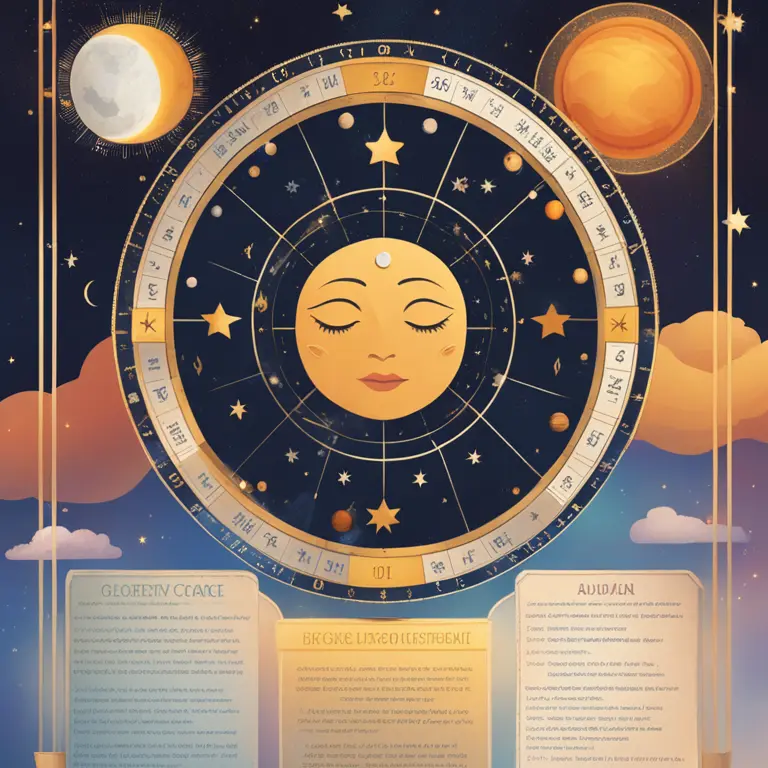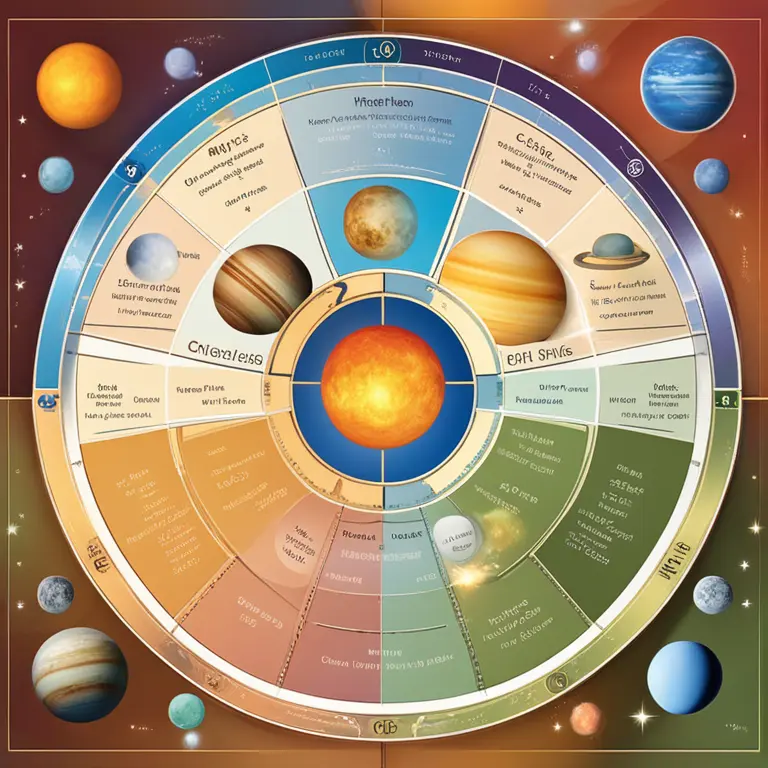
Your Baby’s Birth Chart: A Celestial Snapshot
Delving into the astrological significance of a baby's birth chart, this article serves as a guide to the stars' influence from the very beginning of life.
article by Priya Deshmukh
Introduction to Birth Charts
Welcome to the cosmic journey of birth charts and their impact on newborns. A birth chart, often known as a natal chart, is a snapshot of the sky at the exact moment a baby takes their first breath. This celestial map encapsulates the positions of the sun, moon, and planets, serving as a blueprint to potential personality traits, talents, and life paths. In astrology, a baby's birth chart is a tool used to gain insights into their unique cosmic makeup, guiding parents in nurturing their child's individuality.

Elements of a Birth Chart
There are several key components in a birth chart to consider. Firstly, the sun sign delineates the baby's core personality, much like the essence of their being. The moon sign reveals their emotional inner world, reflecting needs and instinctive reactions. Ascendant, or rising sign, depicts the social mask and approach to new experiences. Together, these elements form the foundational triad of a birth chart, influencing the baby's disposition from birth.

The Planets and Their Roles
Planetary positions further enrich the narrative of a baby's birth chart. Mercury governs communication and thinking patterns, Venus oversees love and beauty, and Mars drives the will to action. Jupiter reflects potential areas of growth and abundance, while Saturn highlights life lessons and structures. The outer planets, Uranus, Neptune, and Pluto, are generational, affecting change and transformation on a larger scale, yet they still contribute to the individual's journey.

House Placements and Aspects
In a birth chart, each planet resides in a house, representing various life areas, such as family, career, or relationships. The placement of a planet within a particular house adds another layer of context, indicating where energies are likely to manifest. Aspects, or angular relationships between planets, describe how these energies interact, uncovering potential harmonies and conflicts. Examining house placements and aspects can give parents a deeper understanding of their child's potential experiences and interactions.

The Role of Free Will
It's crucial to acknowledge the role of free will in astrology. While a birth chart may outline celestial tendencies, it doesn't cement fate. As a child grows, their decisions and life circumstances intertwine with these cosmic inclinations. Astrology can empower parents to guide their children, but it should not be seen as a deterministic map. Like any tool, a birth chart offers wisdom to be used alongside personal growth and choice.
Celestial Guidance for Parenting
Navigating parenthood can be enriched by the insights a birth chart offers. Understanding a child's astrological predispositions can inform parenting approaches, education, and support strategies. It can reveal natural strengths to encourage, sensitivities to protect, and challenges to address, helping to foster a nurturing environment where a child can truly thrive.
Published: 1/22/2024
Modified: 1/23/2024
More predictions
Come back here soon to learn more about yourself and your future


Birth Chart Compatibility: Insights for Relationships
Discover how birth charts reveal the cosmic chemistry between individuals, guiding you towards a harmonious connection.


Unlocking Your Birth Chart Guide
Discover the insights of astrology through a detailed birth chart analysis – your celestial roadmap revealed.